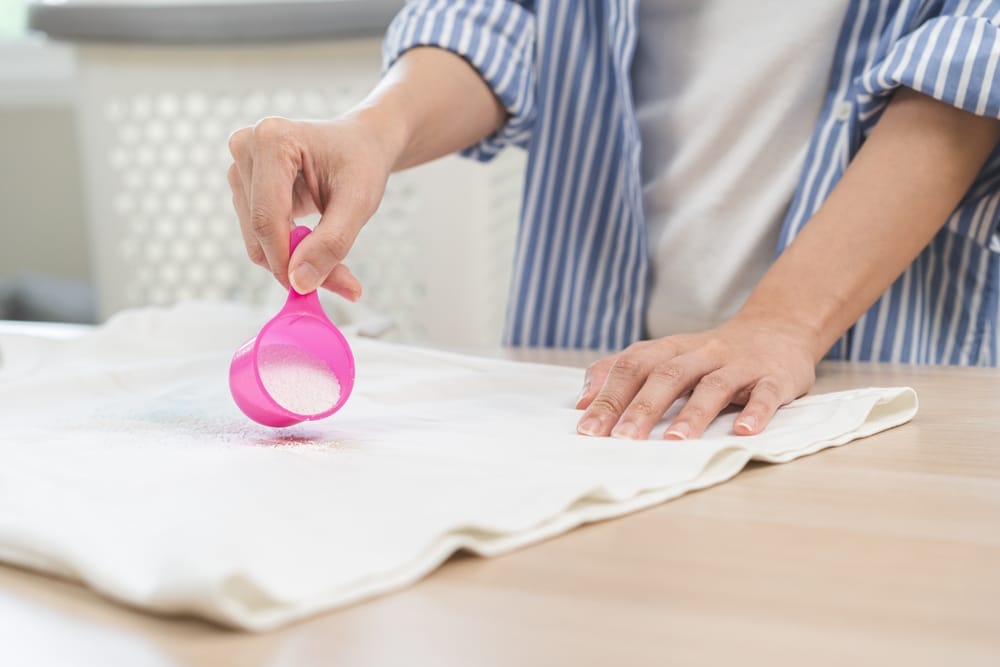Table of Contents
Have you ever wondered how your favorite silk blouse or wool coat comes back from the cleaners looking fresh, stain-free, and perfectly pressed without ever touching a drop of water? That’s the magic of dry cleaning. Dry cleaning is a unique method of cleaning clothes that many people rely on to keep their garments in pristine condition. Unlike traditional laundry methods that use water, dry cleaning employs special solvents to clean fabrics, which makes it particularly effective for delicate fabrics and items that could be damaged by water. Whether you’re dealing with oil-based stains, delicate fabrics like silk, or intricate clothing designs, dry cleaning can offer a safe and efficient solution. In this guide, we’ll break down the cleaning process of how dry cleaning work, its benefits, and some helpful tips to make the most of this service.
What is Dry Cleaning?
Dry cleaning is a method that involves the use of dry cleaning solvent instead of water to clean clothing and textiles. The most common solvents used in the cleaning process include silicone based solvents, hydrocarbon solvents, and petroleum based solutions. These solvents are effective at removing stains such as grease and oil, which are harder to eliminate with traditional water based cleaning methods.
How does Dry Cleaning Work: The Process
The cleaning process involved in dry cleaning is distinct because it does not use water. Instead, it relies on a chemical solvent to clean clothes. Here’s a step-by-step overview of how dry cleaning work.
1. Inspection and Tagging
When you drop off your clothes at a dry cleaner, the first step involves a thorough inspection. The staff checks for stains, missing buttons, or damages and attaches a tag to each garment for identification.
2. Pre-Treatment
Before the actual cleaning begins, any stains on the clothes are addressed with pre-treatment. This involves identifying the type of stain (whether it’s oil-based stains or water-based) and applying a specialized solution to break it down. For oil-based stains, dry cleaning solvents are particularly effective.
3. Cleaning Machines
Once the garments are treated, they are loaded into cleaning machines designed specifically for dry cleaning. These machines are similar to regular washing machines but use a dry cleaning solvent instead of water. The machine gently agitates the clothes while the solvent works to dissolve dirt and oils.
4. Dry Cleaning Solvent
The solvent used in the machine is the key difference from water-based cleaning. Modern dry cleaners in the United States use various types of solvents, including hydrocarbon solvents, silicone-based solvents, and even some petroleum-based solvents. Each has its unique properties, but they all serve to effectively clean clothes without damaging them. Some dry cleaners use more environmentally friendly solvents, while others still rely on more traditional ones.
5. Post Cleaning
After the cleaning cycle is complete, the clothes are carefully dried, often using a heat process that helps evaporate any remaining solvent. Garments are then pressed, steamed, and inspected for any remaining stains or wrinkles.
6. Final Inspection and Packaging
After the cleaning process is complete, the clothes undergo a final inspection. Any remaining stains are addressed, and the clothes are carefully packaged to ensure they remain fresh until you’re ready to wear them.
Types of Solvents Used in Dry Cleaning
Several types of dry cleaning solvents are used by professional cleaners. The type of solvent chosen often depends on the fabric being cleaned and environmental considerations. Below are some common solvents:
Hydrocarbon Solvents
These are gentle on fabrics and effective in removing stains, especially oil based stains. They are widely used because they are less aggressive than older solvents like perchloroethylene (PERC), which has been phased out in many regions for environmental reasons.
Silicone Based Solvents
Silicone-based solvents are growing in popularity due to their environmentally friendly nature. They are non-toxic and safe for both the environment and fabrics. While slightly more expensive, they are an excellent choice for delicate and expensive fabrics.
Petroleum-Based Solvents
These are derived from crude oil and are effective in removing stains. However, they are considered less environmentally safe compared to some modern alternatives. Some dry cleaners still use these solvents, but their popularity is waning as greener options become more widely available.
Wet Cleaning: An Alternative to Dry Cleaning
While traditional dry cleaning uses a chemical solvent, some garments are better suited for a water-based cleaning method called wet cleaning. Wet cleaning uses specialized cleaning machines that gently wash garments using water and biodegradable detergents. This method is often used for fabrics such as silk, wool, and other sensitive materials that are not compatible with regular washing machines.
Unlike dry cleaning, wet cleaning does not involve any solvents. Instead, it uses carefully controlled water temperatures, gentle agitation, and precise drying methods to ensure the clothes are cleaned without being damaged. Wet cleaning is also considered more environmentally friendly than traditional dry cleaning because it eliminates the need for chemical solvents.
Remove the dirt, stains, and spills from your clothes using the best washing machine cleaners, and say hello to a clean and fresh laundry.
Benefits of Dry Cleaning

There are several reasons why dry cleaning is a preferred method for cleaning clothes, especially when it comes to more sensitive or delicate items:
Preserves Delicate Fabrics
One of the most significant advantages of dry cleaning is its ability to clean delicate fabrics like silk, wool, and cashmere without damaging them. Water can weaken the fibers in these fabrics, while solvents used in dry cleaning are much gentler.
Effective in Removing Stains
Dry cleaning work particularly good at removing stains that water cannot easily dissolve, such as oil based stains from grease or makeup. The solvents used in the dry cleaning process can break down these tough stains and lift them from the fabric.
Maintains the Shape of Clothes
Clothes that are susceptible to shrinking or warping, such as suits, dresses, or structured garments, retain their original shape when dry cleaned. The gentle handling of garments during the process ensures that they come out looking crisp and fresh.
Safe for Embellished and Structured Items
Many garments, such as beaded gowns or heavily tailored jackets, require special care. Dry cleaning is a safer method of cleaning these types of items because it avoids the harshness of water and mechanical agitation.
Prolongs the Life of Clothes
By avoiding the wear and tear that comes with traditional washing methods, dry cleaning can extend the lifespan of your clothes. This is especially important for investment pieces like suits, coats, and luxury fabrics.
Tips for Getting the Most Out of Dry Cleaning

If you want to make the most of your dry cleaning experience, consider these helpful tips:
Follow the Care Label
Always check the care label on your clothes before deciding whether to dry clean them. The label will tell you whether a garment requires dry cleaning, wet cleaning, or whether it can be washed at home.
Pre-Treat Stains Immediately
If you spill something on your clothes, take them to the dry cleaner as soon as possible. Point out the stains when dropping them off so that the dry cleaner can apply the correct pre treatment.
Choose Environmentally Friendly Cleaners
If you’re concerned about the environmental impact of traditional solvents, look for cleaners that use environmentally friendly, silicone-based solvents or offer wet cleaning services.
Be Mindful of Fabrics
Certain fabrics, such as silk, wool, and lace, should always be dry-cleaned. These materials are more delicate and require special handling to avoid damage.
Use Dry Cleaning for Special Occasions
For garments that you don’t wear often, such as evening gowns, tuxedos, or heirloom clothing, dry cleaning is the safest way to preserve them in the best possible condition.
Ask About the Solvent Used
When choosing a dry cleaner, don’t hesitate to ask about the type of solvent they use. Some cleaners still use petroleum based solvents, while others have switched to more environmentally friendly options like silicone based solvents or hydrocarbon solvents.
Avoid Over-Cleaning
While dry cleaning is gentler on clothes than washing, it’s still a good idea to avoid cleaning them too often. Over-cleaning can weaken fabrics over time, so try to limit dry cleaning to when it’s necessary.
Conclusion
Dry cleaning is a tried-and-true method for cleaning clothes, particularly those made from delicate fabrics or materials that are sensitive to water. By using a chemical solvent, such as silicone based solvents or hydrocarbon solvents, dry cleaning effectively removes even stubborn oil based stains while preserving the integrity of the fabric. Whether you’re in the United States or elsewhere, understanding how dry cleaning work, the cleaning process and following care instructions ensures your garments will remain in excellent condition for years to come.



